- AI Fire
- Posts
- 🚀 The 2025-26 RAG Project Blueprint For A Standout AI Career
🚀 The 2025-26 RAG Project Blueprint For A Standout AI Career
Go from learning to achieving. Get hands-on with 10 impactful RAG projects that solve real problems and create a compelling showcase of your AI abilities.

What's your primary focus on your AI journey right now? 🗺️ |
Table of Contents
In the rapidly evolving artificial intelligence ecosystem, the technology behind ChatGPT has redefined what's possible. However, even the most powerful models face inherent challenges: their knowledge is limited by their training data, and they are prone to "hallucination" - confidently generating incorrect information. This is where Retrieval-Augmented Generation (RAG) emerges as a breakthrough architectural solution.

RAG enhances the capabilities of large language models by integrating a dynamic information retrieval mechanism. Instead of relying solely on its internal memory, a RAG system first searches for and retrieves relevant data snippets from an external knowledge base (e.g., company documents, databases, websites) before generating a response. Essentially, RAG provides the core technology of ChatGPT with an instantly accessible library and a specialized search engine, allowing it to cite specific sources, answer based on up-to-date information, and significantly reduce fabrication errors.
Imagine an AI assistant that is not only as intelligent as ChatGPT but also capable of research and citation. Instead of giving a generic answer, it can access your PDFs, Slack meeting transcripts, or product databases to provide precise, contextual, and verifiable responses. This approach transforms AI from an omniscient but sometimes unreliable "oracle" into a meticulous and effective research specialist.

This article introduces 10 innovative project ideas that combine the power of ChatGPT's technology with the RAG architecture. Each project is designed to solve a real-world problem, is suitable for developers from beginner to advanced levels, and comes with technology suggestions, a detailed design process, and potential upgrade ideas. Fire up your development environment, prepare your vector store, and get ready to build the next generation of AI applications - apps that are not only intelligent but also trustworthy.
The Foundation Of RAG: Choosing The Right Technology
Before diving into the projects, it's crucial to understand the components of a RAG system. A typical RAG system consists of the following technology layers:
Orchestration Frameworks: These libraries simplify the construction of complex processing chains.
LangChain: A comprehensive framework that provides tools to connect LLMs with external data sources. It is very powerful for creating complex chains and agents.
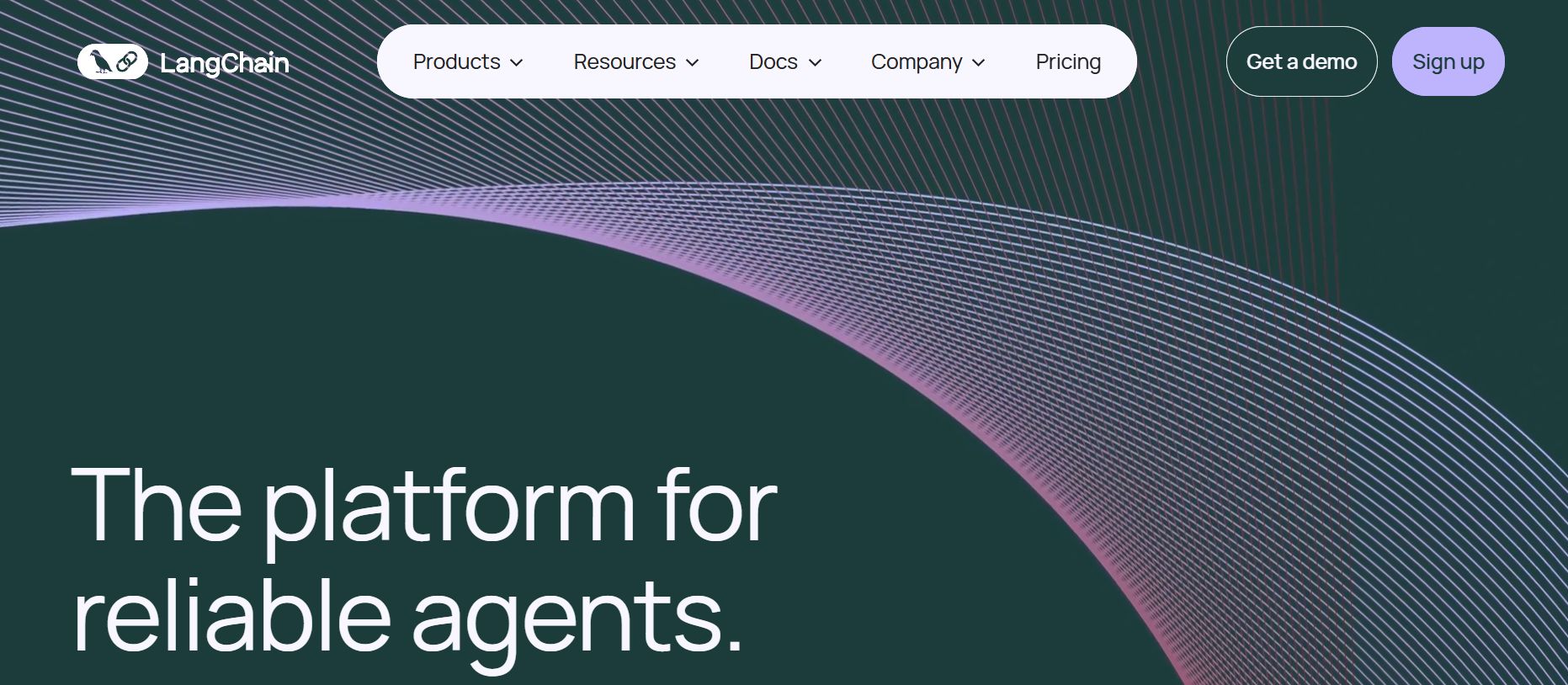
LlamaIndex: Focuses specifically on optimizing the data ingestion and querying process for RAG applications, offering advanced indexing structures and retrievers.
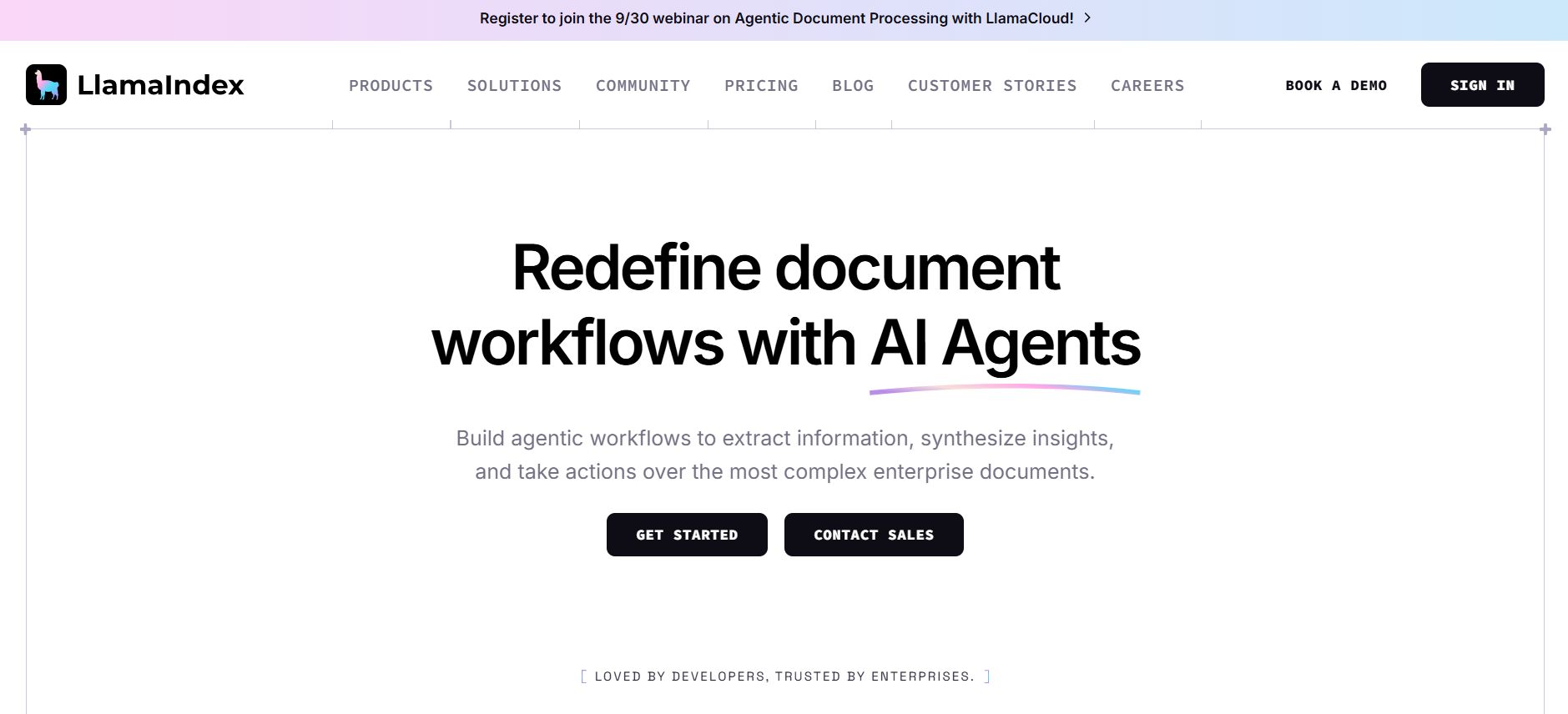
Haystack: An open-source framework for building end-to-end semantic search and Q&A systems.
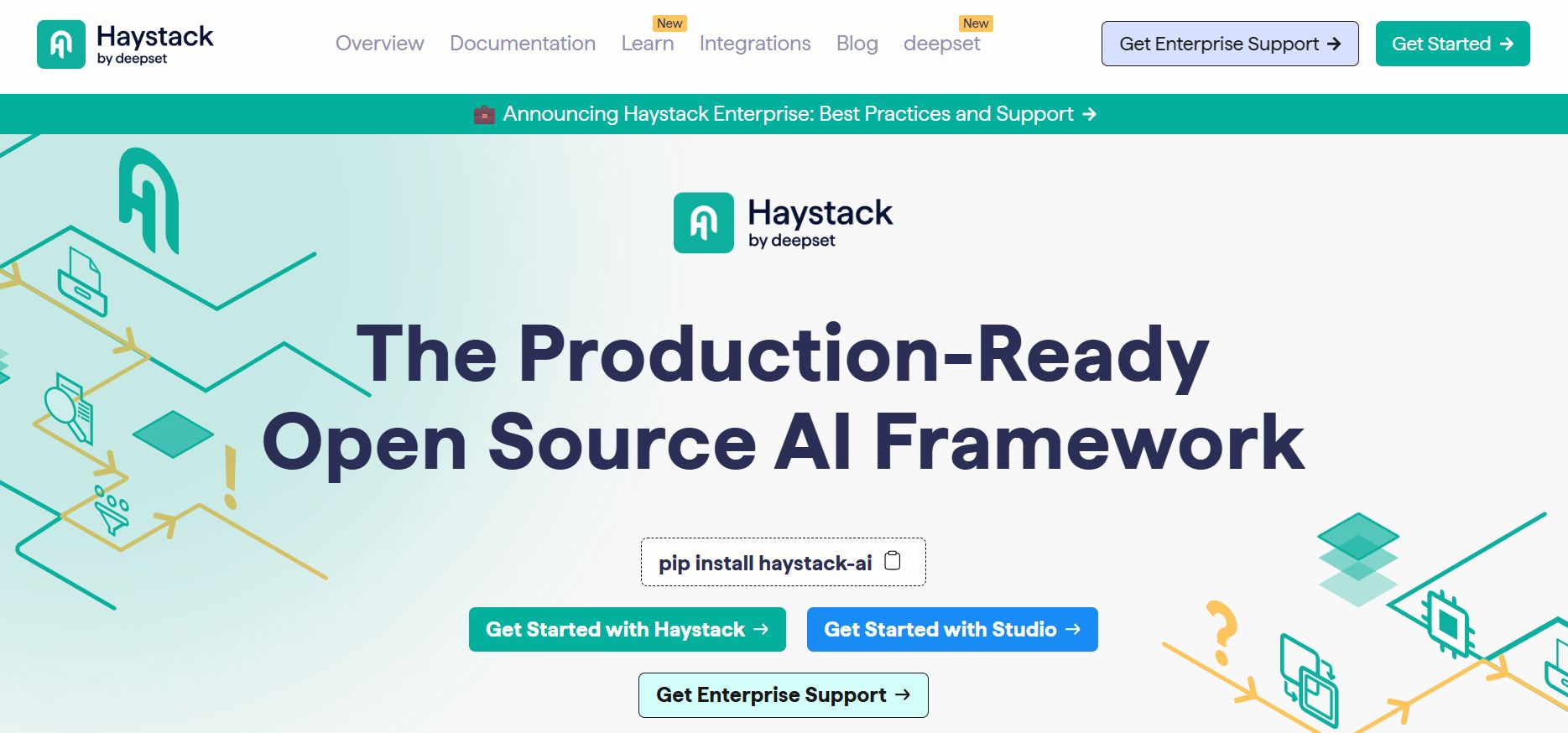
Vector Stores: These are specialized databases for efficiently storing and querying embeddings (numerical representations of text).
Local/In-Memory: FAISS (Facebook AI Similarity Search) and Chroma are excellent choices for smaller projects or local experimentation. They are fast and easy to set up.
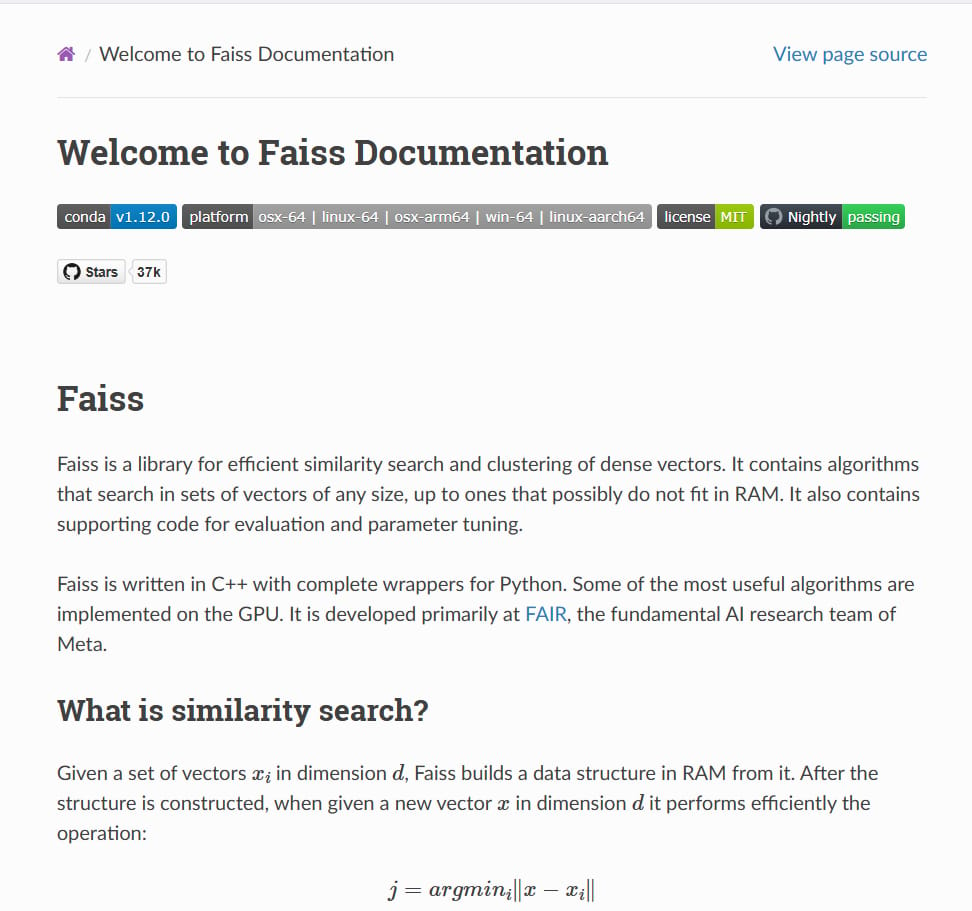
Cloud-Native/Managed: Pinecone, Weaviate, and Qdrant offer scalable, fully-managed solutions ideal for production applications with large datasets and low-latency requirements.
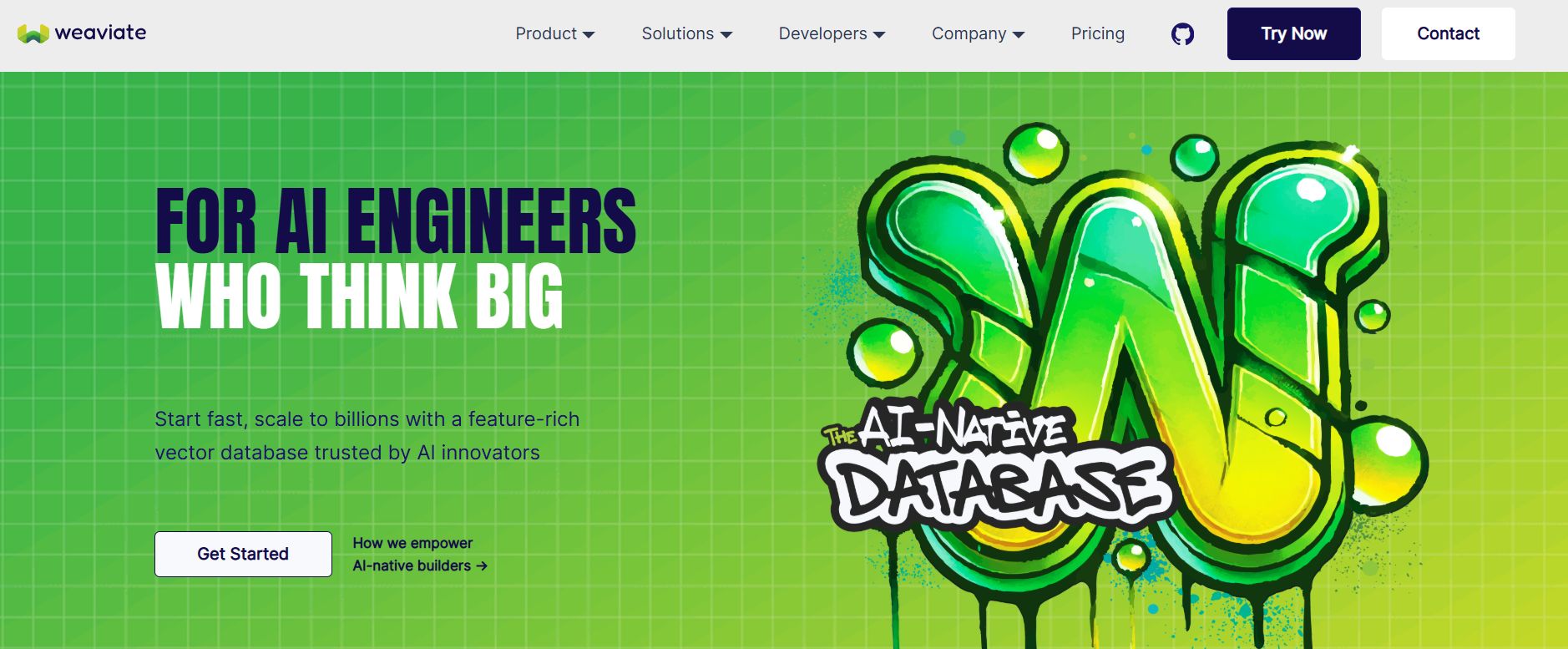
Large Language Model (LLM): The "brain" of the operation, responsible for synthesizing information and generating answers. Within the scope of this article, we will focus on using the powerful models from OpenAI via their API - the very technology that has made ChatGPT a success. Using these models ensures top-tier reasoning and text generation capabilities.
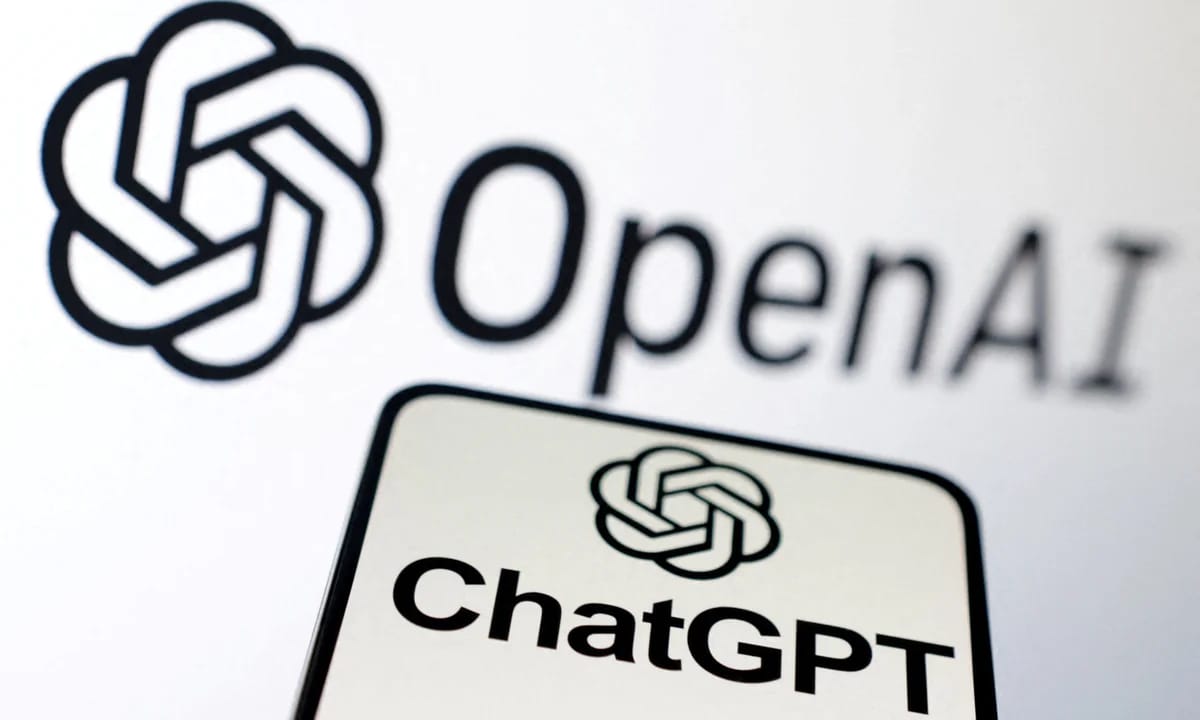
Frontend Frameworks: For users to interact with your application.
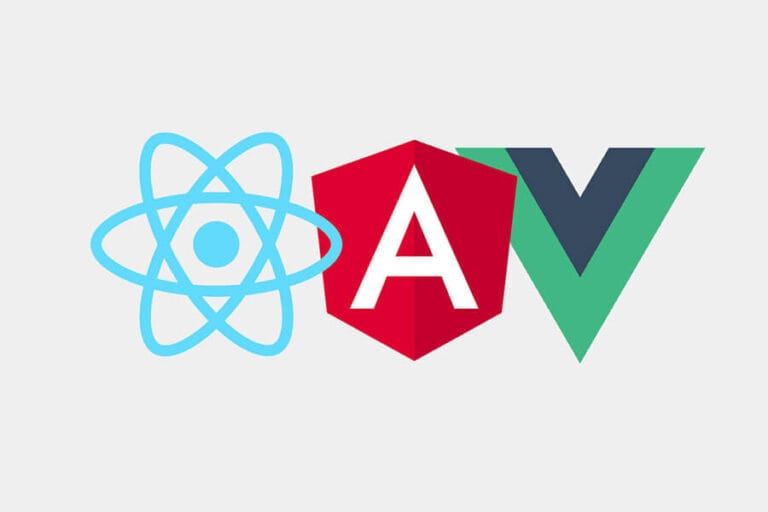
Now, let's explore 10 projects that will help you master the RAG architecture with the power of ChatGPT's technology.
Learn How to Make AI Work For You!
Transform your AI skills with the AI Fire Academy Premium Plan - FREE for 14 days! Gain instant access to 500+ AI workflows, advanced tutorials, exclusive case studies and unbeatable discounts. No risks, cancel anytime.
1. CodeWhisperer - A Chatbot Assistant For Technical Documentation
The Problem: Developers often spend significant time searching through API documentation, library guides, and internal codebases to find answers to specific questions. This process can be fragmented and inefficient.
The Solution: Build a specialized chatbot that is "trained" on a specific set of technical documents (e.g., the documentation for a Python library, an internal API, or an entire project codebase). This chatbot can answer questions like "How do I authenticate an API request to the /users endpoint?" by providing accurate code snippets and explanations from the documentation.
Tools & Technologies: Python, LangChain or LlamaIndex, Chroma or FAISS (vector store), ChatGPT / OpenAI Models (LLM via API), and a simple interface with Streamlit or a Slack integration.
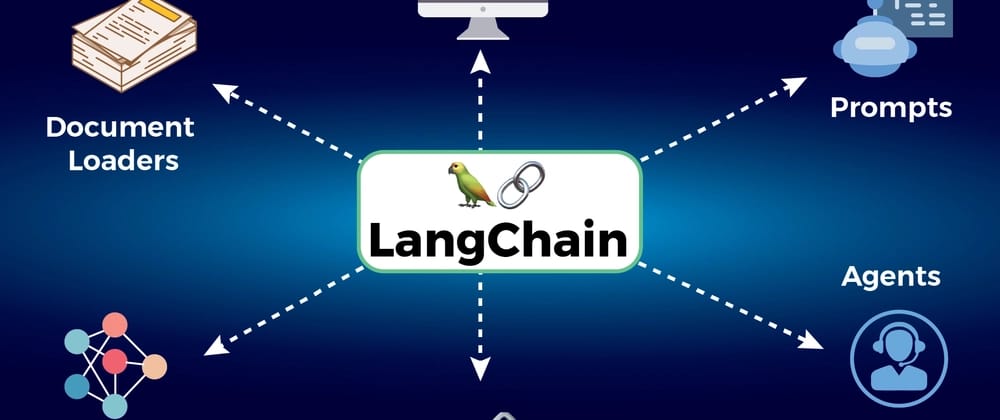
Step-by-Step Design:
Data Collection and Preparation: Write scripts to automatically download or clone documentation from sources like Git repositories, Confluence, or Markdown files. Structure the data, ensuring metadata (like file source, function name) is retained.
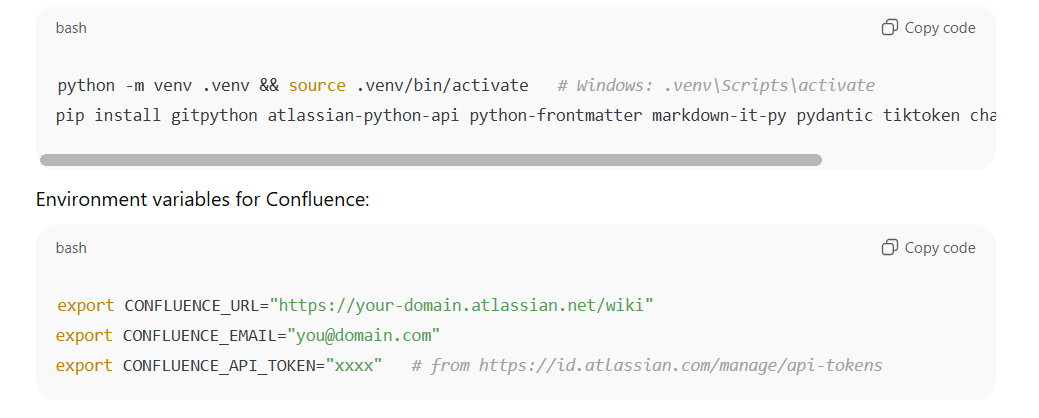
Preprocessing and Chunking: Use text splitters specialized for source code to break large files into smaller, meaningful chunks (around 500-1000 tokens).
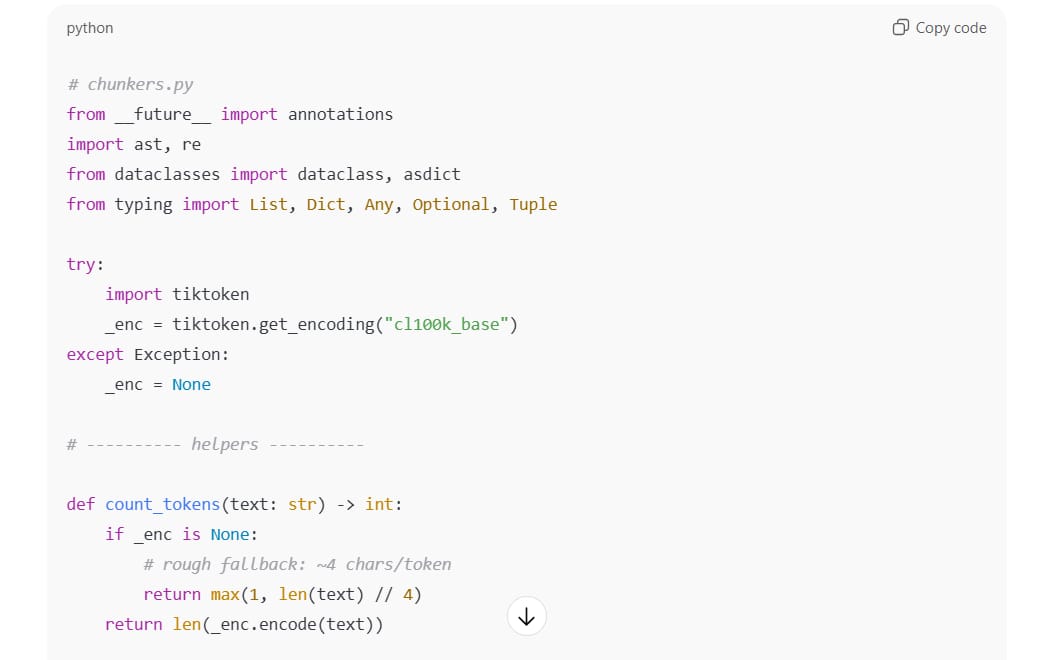
Embedding and Indexing: Use an OpenAI embedding model (like
text-embedding-3-small) to convert each text chunk into a vector. Store these vectors along with their metadata in FAISS.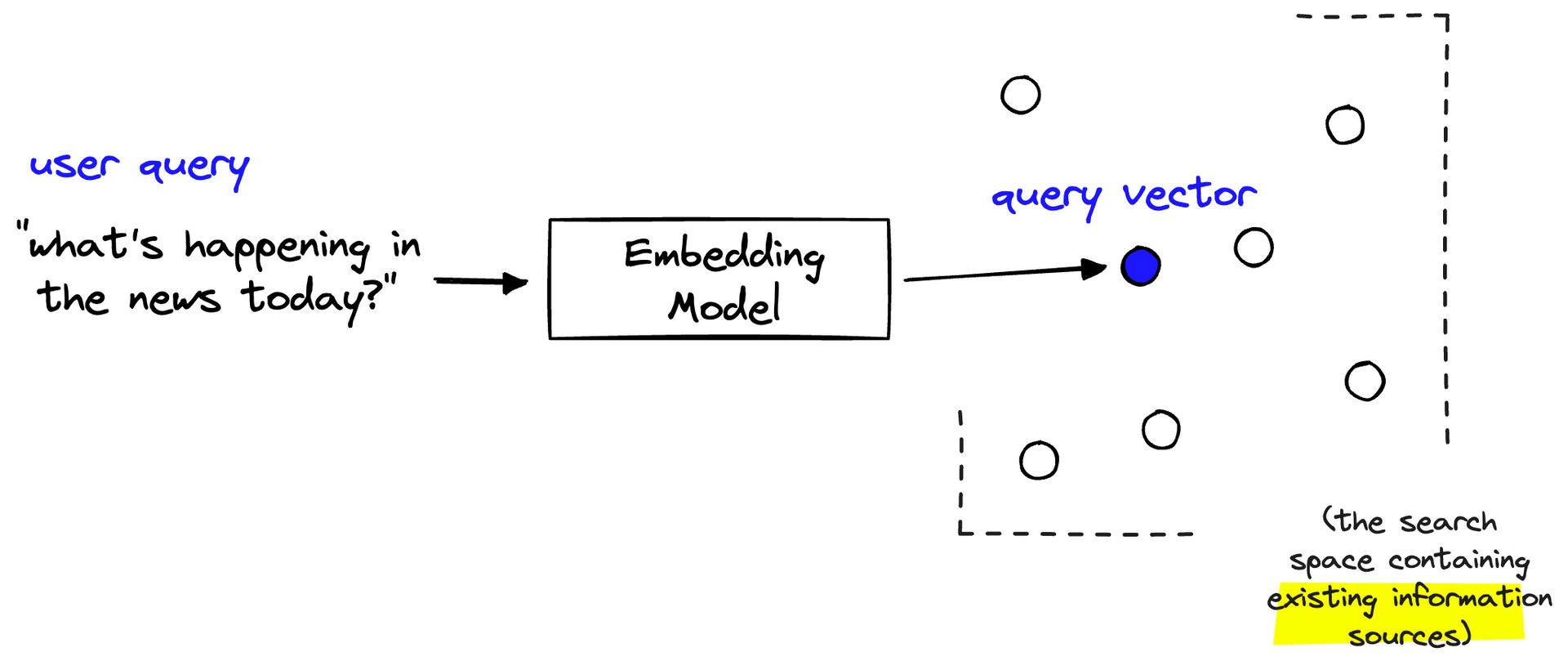
Retrieval and Synthesis: When a user asks a question, create an embedding for it. Use a similarity search algorithm in FAISS to find the top 3-5 most relevant document chunks.
Answer Generation: Construct a detailed prompt that includes the retrieved document chunks as context and the user's question. Send this prompt to an OpenAI model (ChatGPT's core technology) to generate a coherent answer, complete with code examples if applicable.

"Based on the following API documentation snippets:\n\n---\n{retrieved_chunks}\n---\n\nAnswer the user's question. Provide a complete Python code example if possible. If the information is not available in the provided documents, state that clearly.\n\nQuestion: {user_question}"The Result:
You are an API analyst and code synthesizer. Follow these rules strictly.
CONTEXT (docs to rely on—do NOT use outside knowledge):
---
{retrieved_chunks}
---
QUESTION:
{user_question}
RESPONSE REQUIREMENTS:
1) Answer directly, based ONLY on the context above. If something is not present in the docs, state clearly:
“Not available in the provided documents.”
2) Cite which snippet(s) you used by short labels (e.g., “Snippet A”, file name, or section heading from the provided text).
3) If the docs contain any code fragments needed to solve the question,(combine all relevant snippets into one complete Python script).
- Place this under a section titled: “🧩 Combined Code (Single File)”.
- Make it runnable end-to-end: include imports, configuration placeholders, minimal working example, and error handling.
- Resolve overlaps and contradictions; prefer the most recent or explicit instructions in the docs. If unsure, note your assumption.
4) If the docs do NOT provide enough detail to build a full working example, provide the best possible scaffold with clear TODO comments and explicitly list which missing details prevented a full script.
5) Keep explanations concise (bullets are fine), and avoid speculation or undocumented parameters.
6) Prefer official patterns shown in the snippets (auth, endpoints, pagination, retries). If multiple variants exist, pick one and explain why.
OUTPUT FORMAT (use the exact sections):
- ✅ Direct Answer
- 🔎 Sources Used (from the provided context)
- 🧩 Combined Code (Single File)
- 📝 Notes & Assumptions
- ❗ Not in Docs (leave blank if everything was covered)
STYLE:
- Be precise and implementation-ready.
- Use only information found in the CONTEXT.
- English is fine; brief Vietnamese notes are allowed when clarifying assumptions.
QUALITY CHECK BEFORE YOU FINISH:
- Does the code run as a single file with all required imports?
- Are any variables that must be set by the user clearly marked (e.g., API_KEY = "YOUR_KEY")?
- Are errors handled (timeouts, 4xx/5xx)?
- Did you avoid inventing endpoints or parameters not in the docs?User Interface (UI): Display the answer while citing the source files or linking to the original documentation. Allow users to ask follow-up questions for clarification.
Real-World Applications: Internal help desks for development teams, onboarding chatbots for open-source projects, GitHub Copilot-style assistants customized for a company's private codebase.
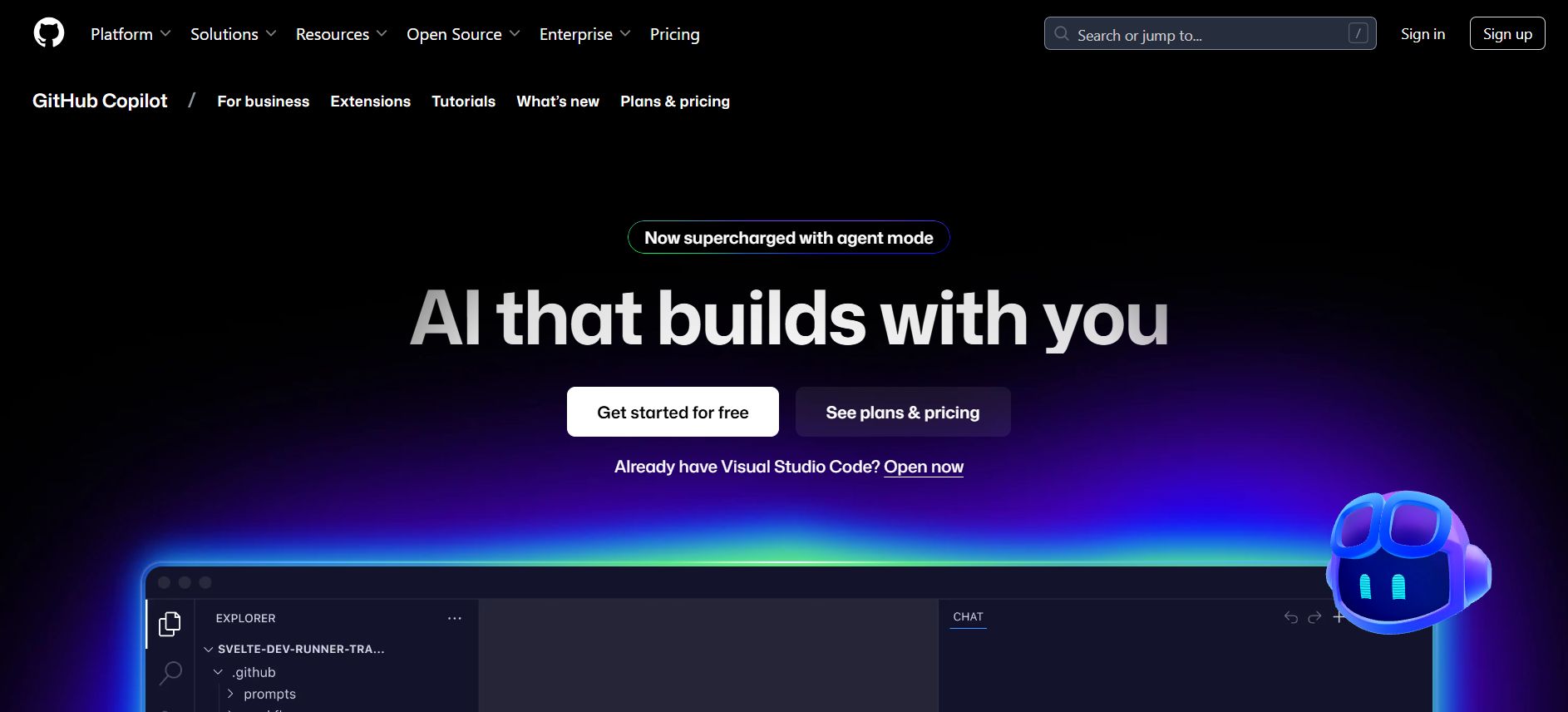
Advanced Enhancements:
Syntax-Aware Parsing: Integrate Abstract Syntax Tree (AST) parsers to accurately extract function and class definitions.
Git Integration: Connect to GitHub repositories to retrieve information from commit messages and pull requests.
Re-ranking: Use a re-ranker model to reorder the initial retrieved results, improving the relevance of the context provided to the LLM.
2. LegalEagle - An AI-Powered Contract Assistant

The Problem: Legal documents such as contracts, terms of service, and regulations are often dense, complex, and difficult for non-experts to understand.
The Solution: Build a RAG assistant that allows users to upload legal documents and ask questions in natural language. For example, a user could upload a lease agreement and ask: "Which clause governs early termination of the contract, and what are the associated penalties?"
Tools & Technologies: Python (using PyMuPDF to extract text from PDFs), ChatGPT / OpenAI Models (LLM with strong reasoning), Pinecone or Qdrant, Haystack, and a secure web interface using React.
In-depth Prompt Example: Summarizing A Party's Obligations
To ensure the AI provides the most accurate and useful answer from a complex legal text, the prompt needs to be extremely detailed. Below is an example of summarizing all obligations for "Party B" from retrieved contract excerpts.
Context: The RAG system has retrieved the following text chunks:
retrieved_chunks = [ "Clause 4.1. Party B is obligated to fully pay the Service Fee before the 5th of each month.", "Clause 9.2. Party B must send a weekly progress report to Party A every Friday.", "Clause 11.3. Upon contract termination, Party B must return all assets provided by Party A within 07 working days." ]The Ultra-Detailed Prompt Sent to the AI:

You will act as an extremely cautious and detailed AI Legal Assistant. Your task is to analyze excerpts from a contract and compile a checklist of obligations for a specific party.
**PROVIDED CONTRACTUAL CONTEXT:**
---
{retrieved_chunks}
---
**ANALYZE AND EXECUTE THE FOLLOWING STEPS:**
1. **READ CAREFULLY:** Read all the text excerpts in the Context section above. This is the **only** source of information you are allowed to use.
2. **IDENTIFY THE OBJECTIVE:** The goal is to find and list **ALL** actions, responsibilities, and obligations that **"Party B"** must perform.
3. **FILTER INFORMATION:**
* Focus only on sentences or clauses that describe an action by "Party B".
* Completely ignore the obligations of "Party A" or any general, mutual obligations.
* **IMPORTANT:** Do not infer, comment, or provide legal advice. Only extract and summarize the actions faithfully.
4. **SYNTHESIZE THE OUTPUT:**
* Create a checklist using bullet points.
* Each bullet point must begin with a strong action verb (e.g., "Pay", "Send", "Return").
* After each point, you must include the precise source citation **in bold** and within parentheses (e.g., **(Clause 4.1)**).
**USER'S QUESTION:**
"List everything Party B has to do in this contract."
Begin execution.

Real-World Applications: Law firms using it to quickly review contracts, corporate legal departments checking for compliance, consumer-facing tools for understanding terms of service.
Advanced Enhancements:
Metadata Filtering: Allow users to filter search results by jurisdiction, date, or document type.
Knowledge Graph Integration: Build a knowledge graph to represent relationships between legal entities.
Comparative Analysis: Allow users to upload two versions of a contract and ask the AI to identify and explain the significant changes.
3. MediGuru - An AI Medical Q&A Assistant Based On Research

The Problem: Medical information changes rapidly. Both patients and doctors need an effective way to access and synthesize the latest knowledge from credible sources.
The Solution: Build an AI assistant that can answer medical questions by retrieving information from a database of research papers and clinical guidelines (e.g., from PubMed, WHO). A user could ask: "What are the recent advancements in treating type 2 diabetes with immunotherapy?"
Tools & Technologies: LangChain, a domain-specific embedding model for biomedicine from Hugging Face, Weaviate, ChatGPT / OpenAI Models (LLM via API), and a Flask interface.
In-depth Prompt Example: Synthesizing Research Findings
Objective: A researcher wants a quick summary of a new drug's efficacy and side effects, based on abstracts from multiple papers.
Context: The RAG system has retrieved the following abstracts:
[
{ "content": "Our study showed that the drug Immunomodulin reduced HbA1c levels by 15% in 75% of patients... The most common side effect was a mild rash.", "metadata": { "author": "Chen et al.", "year": 2024 } },
{ "content": "The Phase III clinical trial of Immunomodulin demonstrated significant efficacy in glycemic control compared to a placebo. However, 10% of patients reported nausea.", "metadata": { "author": "Patel et al.", "year": 2025 } },
{ "content": "A recent meta-analysis indicates that Immunomodulin is effective, but kidney function should be monitored in patients with a history of renal disease.", "metadata": { "author": "Schmidt et al.", "year": 2025 } }
]The Ultra-Detailed Prompt Sent to the AI:

You are an AI Biomedical Research Assistant. Your role is to objectively synthesize information from the provided scientific paper abstracts.
**MANDATORY RULES TO FOLLOW:**
1. **DO NOT** provide medical advice, diagnoses, treatment recommendations, or dosages.
2. **DO NOT** infer information that is not present in the text.
3. Every factual claim (figures, results, side effects) must be followed by a citation in the [Author, Year] format.
4. Always use neutral, scientific language.
**CONTEXT (PAPER ABSTRACTS):**
<sources>
{retrieved_chunks_with_metadata}
</sources>
**TASK:**
Based **ONLY** on the context above, answer the user's question by creating a structured summary with the following sections:
- **Main Findings:** A brief summary of the overall results.
- **Reported Efficacy:** List the specific metrics of effectiveness.
- **Side Effects and Notes:** List all mentioned side effects or warnings.
**USER'S QUESTION:**
"Summarize the information on the efficacy and side effects of the drug Immunomodulin."
Begin execution.

Real-World Applications: Clinical decision support tools for doctors, research assistants for biomedical scientists, patient health education platforms.
Advanced Enhancements:
Multimodal Analysis: Extend the system to be able to analyze medical images along with text.
Symptom Checker Flow: Design a structured conversational flow to guide users through a series of questions (but without providing a diagnosis).
4. LearnBot - A Personalized Tutoring Assistant

The Problem: Students often need explanations tailored to their level of understanding. One-way learning methods lack interactivity and personalization.
The Solution: Create an AI tutor chatbot that is fed with specific learning materials like textbooks and lecture notes. A student could ask: "Explain the law of conservation of energy using a roller coaster example, based on Chapter 5 of the physics textbook."
Tools & Technologies: LlamaIndex, open educational resources (e.g., Khan Academy), Chroma, ChatGPT / OpenAI Models (LLM via API), and a friendly interface like a Discord bot.
In-depth Prompt Example: Explaining A Scientific Concept
Objective: A student is struggling with a law of physics and needs a simple, intuitive explanation, complete with an example and a small question to reinforce their knowledge.
Context: The RAG system has retrieved the following excerpts from a textbook:
retrieved_chunks=
{ "content": "Newton's 3rd Law of Motion: For every action, there is always an equal and opposite reaction. This means that forces always occur in pairs.", "source": "Physics 10, Chapter 3, page 45" },
{ "content": "When an object A exerts a force on an object B (force F_AB), object B also exerts a force back on object A (reaction force F_BA). In vector terms, F_AB = -F_BA. Note that the action and reaction forces act on two different objects.", "source": "Physics 10, Chapter 3, page 46" }
]The Ultra-Detailed Prompt Sent to the AI:

You will act as an AI Tutor named LearnBot. Your style is **friendly, patient, and extremely encouraging**.
**CONTEXT (EXCERPTS FROM TEXTBOOK):**
<context>
{retrieved_chunks}
</context>
**TASK:**
Based on the textbook excerpts above, answer the student's question by following these steps:
1. **Friendly Greeting:** Start with a warm greeting.
2. **Simple Explanation:** Rephrase the concept from the context in simple, easy-to-understand language for a high school student. AVOID overly complex jargon.
3. **Use a Relatable Analogy:** Provide a real-world example or analogy to illustrate the law. This example must be very intuitive.
4. **Reinforcement Question:** End with a simple multiple-choice question with 3 options to check if the student has grasped the main idea.
5. **Maintain Tone:** Keep a positive and encouraging tone throughout the entire response.
**STUDENT'S QUESTION:**
"I don't really understand Newton's 3rd Law. Could you please explain it again?"
Begin execution.

Real-World Applications: Online learning platforms, homework helper chatbots, language learning assistants.
Advanced Enhancements:
Progress Tracking: Maintain a profile of topics the student has asked about to personalize future sessions.
Dynamic Quiz Generation: Automatically create short quizzes to reinforce knowledge.
Voice Integration: Use text-to-speech (TTS) and speech-to-text (STT) APIs for a conversational tutoring experience.
5. NewsDigest - A News Summarizer & Q&A Assistant

The Problem: The daily volume of news from countless sources can be overwhelming. Grasping key developments requires reading and synthesizing information from multiple articles.
The Solution: Build a RAG application that automatically collects news from selected sources and allows users to ask about the day's events. For example: "Summarize the different perspectives on the newly announced economic policy, citing reputable news sources."
Tools & Technologies: News API or RSS scrapers, LangChain, FAISS or Pinecone, ChatGPT / OpenAI Models (LLM skilled at summarization), and a web dashboard.
In-depth Prompt Example: Multi-perspective News Synthesis
Objective: A user wants an objective, unbiased summary of a complex event (e.g., a new policy), synthesized from multiple news sources that may have different perspectives.
Context: The RAG system has retrieved the following news snippets from various outlets about a hypothetical "Digital Services Act".
retrieved_chunks_from_multiple_sources
[
{ "content": "Today, the government passed the Digital Services Act, requiring large platforms to be more transparent about their algorithms. Tech leaders hailed it as a step forward.", "source": "TechNews Today" },
{ "content": "The new Digital Services Act will take effect in January, forcing tech companies to moderate illegal content more quickly. Consumer groups welcomed the move but raised concerns about enforcement.", "source": "Global Press" },
{ "content": "Free speech activists criticized the Digital Services Act, arguing that its vague content moderation rules could lead to over-censorship and stifle dissenting voices.", "source": "The Daily Critic" }
]The Ultra-Detailed Prompt Sent to the AI:

You will act as an objective and neutral News Analyst AI. Your task is to synthesize information from multiple articles about the same event, presenting facts and different perspectives in an unbiased manner.
**PROVIDED NEWS SOURCES:**
<articles>
{retrieved_chunks_from_multiple_sources}
</articles>
**TASK:**
Based **ONLY** on the provided articles, create a clearly structured summary.
1. **Analysis:** Carefully read all news snippets. Identify the factual points (where sources agree) and the opinions or unique angles of each source.
2. **Draft the Summary:** Write a summary with the following structure:
* **Key Event Summary:**
* Present the core facts as bullet points. Only include information that is treated as factual and confirmed by multiple sources.
* **Different Perspectives:**
* Present the opinions, commentary, or different angles that each news source emphasizes.
* When presenting a viewpoint, attribute it clearly (e.g., "According to TechNews Today...", "Meanwhile, The Daily Critic argues that...").
3. **MANDATORY RULES:**
* Maintain a completely neutral tone. Do not use emotional or sensationalist language.
* Do not add any information that is not present in the given excerpts.
**TOPIC:**
"Information and viewpoints on the new Digital Services Act."
Begin execution.

Real-World Applications: News aggregator sites, market intelligence reports, personalized news summary emails.
Advanced Enhancements:
Sentiment Analysis: Tag articles as positive, negative, or neutral.
Trend Detection: Analyze the frequency of topics over time to identify emerging trends.
Multilingual Support: Integrate machine translation models to summarize news from international sources.
6. TripPlanner AI - A Smart Travel Itinerary Generator

The Problem: Planning a trip requires researching and combining information from many sources. The process is time-consuming and often fragmented.
The Solution: Create a travel planning assistant that uses RAG to build custom itineraries. The user inputs their preferences (e.g., "plan a 4-day trip to Da Lat for a nature-loving couple on a moderate budget"), and the AI retrieves up-to-date information to create a detailed schedule.
Tools & Technologies: Web scrapers, ChatGPT / OpenAI Models (LLM with complex planning capabilities), and a mobile or web UI.
In-depth Prompt Example: Building A Detailed Travel Itinerary
Objective: A user wants the AI to create a logical, engaging, and personalized 3-day travel itinerary for Da Lat, based on their preferences and a list of potential locations retrieved by the RAG system.
Context: The RAG system has queried and filtered a list of locations matching the user's preferences for "nature" and "coffee".
retrieved_and_filtered_locations=
[
{ "name": "Datanla Waterfall", "type": "attraction", "theme": "nature", "description": "Famous for its alpine coaster through the forest and majestic scenery." },
{ "name": "Tuyen Lam Lake", "type": "attraction", "theme": "nature", "description": "A vast lake with fresh air, suitable for boating." },
{ "name": "Tui Mo To", "type": "cafe", "theme": "cafe", "description": "A cafe with a beautiful view of greenhouses and a daisy garden." },
{ "name": "Cheo Veooo", "type": "cafe", "theme": "cafe", "description": "A charming little wooden cafe with a valley view, offering a peaceful feeling." },
{ "name": "Tren Dinh Doi Trang Restaurant", "type": "restaurant", "theme": "food", "description": "A romantic restaurant with a panoramic view of the city at night." },
{ "name": "Ba Toa Beef Hotpot (Quan Go)", "type": "restaurant", "theme": "food", "description": "A famous spot to enjoy the specialty Da Lat beef hotpot." }
]The Ultra-Detailed Prompt Sent to the AI:

You will act as an expert AI Travel Planner named 'Trippy'. Your task is to create a detailed, logical, and enjoyable travel itinerary based on the user's request and the provided list of locations.
**USER'S REQUEST:**
"Plan a 3-day trip to Da Lat for me. I like nature, relaxation, and beautiful coffee shops."
**LIST OF POTENTIAL LOCATIONS:**
<data>
{retrieved_and_filtered_locations}
</data>
**TASK:**
Build a detailed 3-day itinerary. Strictly adhere to the following rules:
1. **Clear Structure:**
* Divide the itinerary by day (Day 1, Day 2, Day 3).
* Within each day, divide into sessions (Morning, Noon, Afternoon, Evening).
2. **Logical Planning:**
* Each day should have a balance of sightseeing and relaxation. Avoid an overly packed schedule.
* Suggest activities that match the user's preferences for "nature" and "coffee".
* **IMPORTANT:** Try to group geographically close locations into the same session or day to optimize travel time.
3. **Engaging Descriptions:**
* For each location in the itinerary, write a short, engaging description explaining **why** it is interesting and suitable for the user's preferences.
4. **Formatting:**
* Use Markdown formatting to present the itinerary in a clean, easy-to-read way.
Begin planning.


Real-World Applications: Chatbots for travel agencies, personal vacation planning apps, skills for voice assistants.
Advanced Enhancements:
Booking Integration: Connect to airline and hotel APIs to allow users to book directly.
Dynamic Adjustments: Allow the itinerary to adjust automatically based on real-time data like weather.
Personalization from Feedback: Learn from user ratings to improve future recommendations.
7. ShopAdvisor - An E-Commerce Customer Assistant

The Problem: Customers often have very specific product questions that generic FAQ pages can't answer.
The Solution: Build a smart shopping assistant that uses RAG on the entire product catalog, technical specifications, and customer reviews. A customer could ask: "Compare the battery life of phone model X and Y when streaming video, and which one has a better wide-angle camera?"
Tools & Technologies: Weaviate or Pinecone, LangChain, data from Shopify, ChatGPT / OpenAI Models (LLM via API), and integration with a web chat interface or Zendesk.
In-depth Prompt Example: Multi-faceted Product Comparison
Objective: A customer is deciding between two products and needs an objective comparison that combines both manufacturer specifications and real-world user experiences to make a decision.
Context: The RAG system has retrieved both technical specifications (specs) and user reviews for two phones: "Galaxy Z" and "Pixel X".
retrieved_reviews=
[
{"product": "Galaxy Z", "review": "Photos from the Galaxy Z have very pleasing colors, looking more vibrant than real life."},
{"product": "Pixel X", "review": "The Pixel X's camera captures very true-to-life photos, especially in low-light conditions."},
{"product": "Pixel X", "review": "The battery is 5000mAh, but for some reason, with mixed usage, it barely lasts a full day."}
]The Ultra-Detailed Prompt Sent to the AI:

You will act as an AI product advisor named 'ShopAdvisor'. Your role is to provide objective, detailed, and balanced comparisons to help customers make the best choice for their needs.
**PROVIDED INFORMATION:**
<product_specs>
{retrieved_specs}
</product_specs>
<customer_reviews>
{retrieved_reviews}
</customer_reviews>
**TASK:**
Based **ONLY** on the provided specifications and customer reviews, answer the customer's question. Strictly follow these steps:
1. **Analyze Request:** Identify the key criteria the customer cares about (in this case, "camera" and "battery").
2. **Compare Each Criterion:**
* Create a separate section for each criterion (e.g., "Camera Comparison", "Battery Comparison").
* In each section, first state the objective technical specs for both products.
* Immediately after, add context from user reviews to provide a real-world perspective.
3. **Create a Balanced Summary:**
* Write a final summary paragraph.
* **IMPORTANT:** Do not declare one product as definitively "better". Instead, provide suggestions based on user priorities. For example: "If you prioritize X, the Galaxy Z might be a better fit, but if you value Y, the Pixel X is worth considering."
4. **Tone:** Maintain a neutral, helpful, and unbiased tone throughout.
**CUSTOMER'S QUESTION:**
"Should I buy the Galaxy Z or the Pixel X? I'm most interested in the camera and battery life."
Begin execution.


Real-World Applications: Chatbots on retail websites, automated FAQ systems, post-sales support.
Advanced Enhancements:
Personalization: Integrate with customer purchase history for more relevant recommendations.
Upselling and Cross-selling: Proactively suggest accessories or premium products.
Multimodal Analysis: Allow customers to upload a photo of a faulty product and have the AI diagnose the issue.
8. JobMate - An AI-Powered Career Coach

The Problem: Job seekers often struggle to tailor their resumes to each job description (JD) and prepare for industry-specific interview questions.
The Solution: Build a RAG tool that analyzes JDs and career advice articles. A user can upload their resume and a target JD, then ask: "Which skills on my resume best match this JD, and what keywords should I add?"
Tools & Technologies: Scraped data from LinkedIn, career blogs, LangChain, FAISS, ChatGPT / OpenAI Models (LLM via API), and a simple web app.
In-depth Prompt Example: Optimizing A Resume For A Job Description
Objective: A candidate wants to receive specific, actionable feedback to revise their resume, highlighting the most relevant skills and experiences for a job position they are targeting.
Context: The user provides a snippet from their resume (CV) and a snippet from the target job description (JD).
Work Experience:
Marketing Specialist - ABC Company (2022 - Present)
- Responsible for managing social media campaigns.
- Wrote content for blogs and emails.
Job Description: Digital Marketing Manager
Requirements:
- Deep experience in SEO and SEM optimization.
- Analyze campaign performance data to make decisions.
- Ability to perform A/B testing to improve conversion rates.
The Ultra-Detailed Prompt Sent to the AI:

You will act as a professional AI Career Coach named 'JobMate'. Your tone is constructive, encouraging, and focused on providing specific, immediately applicable advice.
**CANDIDATE'S RESUME (CV):**
<cv>
{user_cv}
</cv>
**JOB DESCRIPTION (JD):**
<jd>
{target_jd}
</jd>
**TASK:**
Analyze the provided CV and JD to give feedback that helps the candidate optimize their profile. Follow these steps:
1. **Skill Gap Analysis:**
* Compare the CV and the JD.
* Identify the top 2-3 most important skills or keywords present in the JD that are missing or not clearly represented in the CV.
2. **Specific Revision Suggestion:**
* Select one bullet point from the CV's "Work Experience" section that has the most potential for improvement.
* Rewrite that bullet point using the STAR method (Situation, Task, Action, Result).
* **IMPORTANT:** The rewritten version must incorporate one of the missing keywords identified in step 1 and include quantifiable metrics if possible.
3. **Explain the Rationale:** Clearly state why the suggested version is stronger and more effective than the original.
4. **Output Format:** Present your response using the following structure:
* **Skill Gap Analysis:** (List the missing skills)
* **Resume Revision Suggestion:**
* **Original:** ...
* **Suggested:** ...
* **Rationale:** ...
**USER'S REQUEST:**
"Help me improve this resume to better fit that job description."
Begin execution.


Real-World Applications: University career centers, job search platforms, career coaching services.
Advanced Enhancements:
Mock Interviews: Integrate speech recognition for mock interviews.
Market Trend Analysis: Analyze JDs at scale to provide insights on in-demand skills.
Cover Letter Generation: Automatically generate a personalized cover letter draft.
9. BrainyBinder - A Personal Knowledge Base

The Problem: Finding a specific piece of information from our notes, saved articles, and PDFs can be like finding a needle in a haystack.
The Solution: Build a "Second Brain" application where users can connect all their digital data sources and ask questions across their entire personal knowledge repository. For example: "What were the key takeaways from the 'Project Phoenix' meeting last month?"
Tools & Technologies: LlamaIndex (with loaders for Google Docs, Notion), a local vector store like Chroma, ChatGPT / OpenAI Models (LLM via API), and a web or desktop (Electron) interface
In-depth Prompt Example: Synthesizing Information From Multiple Sources
Objective: A user wants to quickly synthesize key information about a specific project ("Project Titan"), with facts scattered across various document types (meeting notes, emails, technical documents).
Context: The RAG system scans the personal knowledge base and retrieves relevant information snippets from different files.
retrieved_chunks_from_personal_data=
[
{ "content": "Final decision in the meeting: The budget for Project Titan is approved at $50,000.", "source": "Meeting_Notes_08-15-2025.md" },
{ "content": "Regarding Project Titan's timeline, we will set a goal to launch the beta version by the end of Q4.", "source": "Email_from_Binh.eml" },
{ "content": "The backend for Project Titan will be built using Python with the FastAPI framework.", "source": "Technical_Specs_Titan.pdf" },
{ "content": "Key personnel for Project Titan are An (Lead Dev) and Chi (Project Manager).", "source": "Meeting_Notes_08-15-2025.md" }
]The Ultra-Detailed Prompt Sent to the AI:

You will act as 'BrainyBinder', my personal AI assistant for knowledge management. Your task is to connect disparate pieces of information from my "digital brain" and synthesize them into a coherent, easy-to-understand summary.
**RETRIEVED INFORMATION SNIPPETS:**
<context>
{retrieved_chunks_from_personal_data}
</context>
**TASK:**
Based **ONLY** on the provided information snippets above, answer the user's question. Strictly adhere to the following requirements:
1. **Analyze and Synthesize:**
* Read and understand all the information from the different sources.
* Extract the key facts that directly relate to the user's question.
* Write a "Quick Summary" paragraph to directly answer the question.
2. **Detailed Source Citation:**
* Immediately after the summary, create a bulleted list titled "Details & Sources".
* In this list, each bullet point must state a specific fact and **must** credit its original source file.
3. **RULES:** Do not add any information that is not in the context. Keep the answer concise and fact-focused.
**USER'S QUESTION:**
"Summarize the important information about Project Titan for me: budget, timeline, technology, and personnel?"
Begin execution.

Real-World Applications: Researchers managing references, students organizing study materials, professionals tracking projects and ideas.
Advanced Enhancements:
Semantic Tagging and Filtering: Automatically tag notes based on their content.
Proactive Reminders: The AI can proactively suggest connections between new notes and old ideas.
Multi-Agent Setup: Create specialized agents for different knowledge domains.
10. ChefAI - A Cooking & Recipe Assistant

The Problem: Home cooks often face the "what's for dinner?" dilemma based on the ingredients they have on hand.
The Solution: Create a cooking chatbot that is fed data from food blogs and cookbooks. A user can ask: "I have chicken breast, spinach, and a can of tomatoes. Suggest a low-carb recipe that takes under 30 minutes."
Tools & Technologies: A recipe dataset (from Kaggle), LangChain, ChatGPT / OpenAI Models (LLM via API), and a mobile-friendly interface.
In-depth Prompt Example: Suggesting And Modifying A Recipe
Objective: A user has a few specific ingredients and wants to find a suitable recipe. At the same time, they also want to modify that recipe to meet a dietary requirement (e.g., making it vegetarian).
Context: Based on the ingredients "chicken breast," "spinach," and "tomatoes," the RAG system retrieves the most suitable recipe.
retrieved_recipe=
Dish Name: Chicken Stir-fry with Spinach and Tomatoes
Ingredients:
- 200g chicken breast, sliced
- 1 bunch of spinach
- 2 tomatoes, diced
- 2 cloves of garlic, minced
Instructions:
1. Sauté the minced garlic until fragrant.
2. Add the chicken and stir-fry until cooked through.
3. Add tomatoes, season to taste.
4. Finally, add the spinach, stir quickly, and turn off the heat.The Ultra-Detailed Prompt Sent to the AI:

You will act as 'ChefAI', a creative and friendly AI cooking assistant. Your mission is to help users find recipes and adapt them to suit their personal needs.
**ORIGINAL RECIPE FOUND:**
<recipe>
{retrieved_recipe}
</recipe>
**USER'S REQUEST:**
"I have chicken breast, spinach, and tomatoes. Is there a recipe? Oh, and how can I make it vegetarian?"
**TASK:**
Based on the original recipe and the user's request, follow these steps:
1. **Analyze the Request:** Identify the two main requests: (1) find a recipe with the given ingredients, and (2) convert that recipe to be vegetarian.
2. **Suggest a Substitute Ingredient:**
* Identify the ingredient that needs to be replaced to make the dish vegetarian (in this case, "chicken breast").
* Suggest a suitable and easy-to-find substitute (e.g., "tofu" or "mushrooms"). Briefly explain why it is a good fit.
3. **Rewrite the New Recipe:**
* Rewrite the entire adjusted recipe with the new ingredient.
* Give the vegetarian recipe a new name (e.g., "Tofu Stir-fry with Spinach and Tomatoes").
* Keep the other steps the same but adjust them to suit the new ingredient.
4. **Formatting and Tone:**
* Present the answer clearly with headings like "Adaptation Suggestion" and "Your Vegetarian Recipe".
* Always use an encouraging, friendly tone (e.g., "Great! Here's how you can adapt it...").
Begin execution.

Real-World Applications: Smart kitchen assistants, meal planning apps, chatbots for food brands.
Advanced Enhancements:
Voice Assistant Integration: Allow users to interact with the assistant via voice while cooking.
Pantry Management: Let users track their ingredients, and the AI will suggest recipes to use up items nearing their expiration date.
Shopping List Generation: Automatically create a shopping list based on a selected recipe.
Conclusion: From Idea To Portfolio
Each project outlined above is more than just a technical exercise; they are potential solutions to real-world problems. By combining the powerful technology of ChatGPT with the structured data retrieval mechanism of RAG, you can build AI applications that are not only intelligent but also reliable, accurate, and genuinely useful.
The journey to building an impressive AI portfolio for 2025–2026 begins by choosing a project you're passionate about, breaking it down into manageable tasks, and starting to build. Document your process, share your code on GitHub, and write about the challenges you overcame. This is the most compelling evidence that you not only understand AI technology but can also create practical, valuable products.
If you are interested in other topics and how AI is transforming different aspects of our lives or even in making money using AI with more detailed, step-by-step guidance, you can find our other articles here:
Mastering Midjourney V6: 8 Insider Prompting Tricks That Feel Illegal to Know*
Fully Detailed & Powerful Instruction That Drive Custom GPTs/ Projects/ Gems
Easy Guide to Writing Effective Al Prompts for Better Results*
Stop "Prompting" AI Coding Assistants! Do THIS Instead
*indicates a premium content, if any
Reply